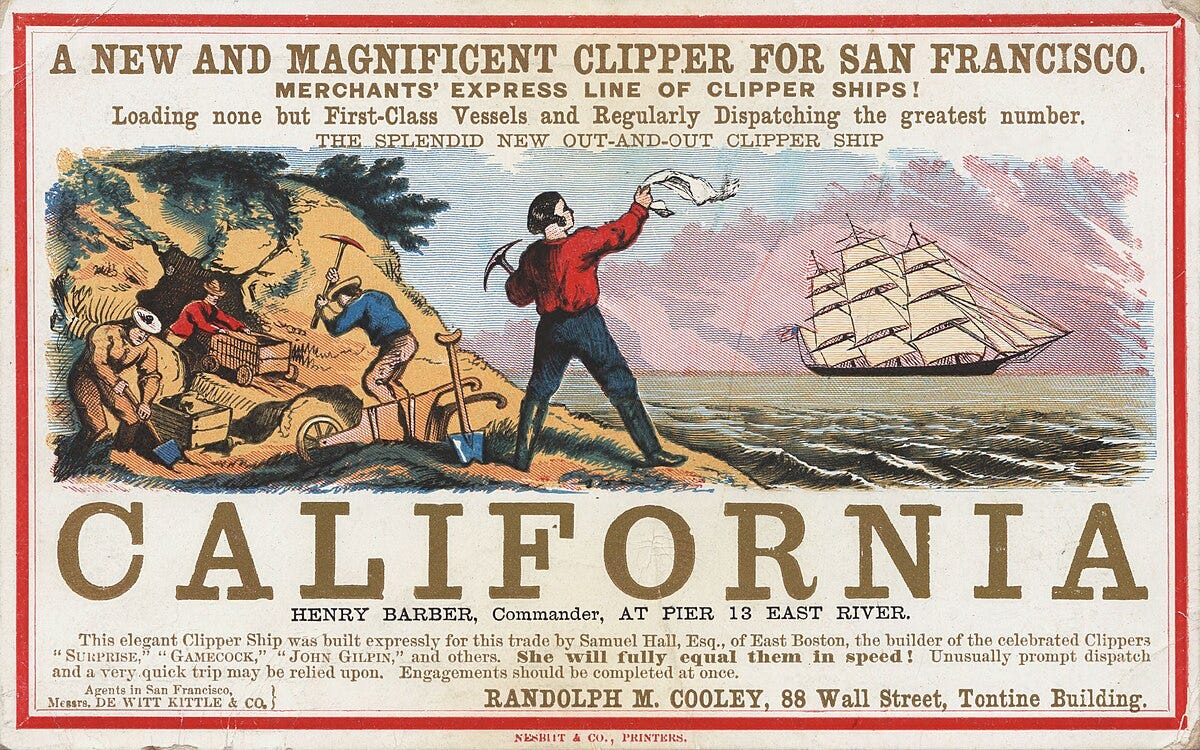
On August 19, 1848, the New York Herald reported the news along the American East Coast of the California Gold Rush. It was not new news to those further West, as the gold rush had started in January and was publicized in San Francisco in March.
However, the New York Herald was then the most popular and profitable newspaper in the US. By the dawn of the American Civil War, the newspaper claimed a circulation of 84,000 copies and called itself “the most largely circulated journal in the world.” In any event, the news of the gold rush spread to a much larger audience than previously and circulated the gold fever much wider than before.
What was the result of this news on San Francisco, the gold miners, and California itself?
Gold Discovery
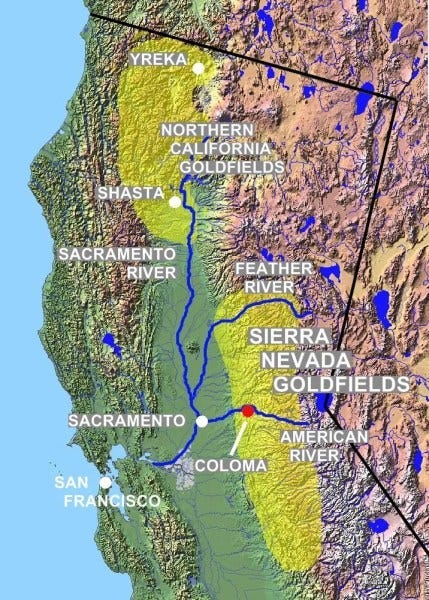
James Marshall was installing a water-powered sawmill along the American River in Coloma, California, when his carpenter discovered gold flakes in the stream bed in North-central California at Sutter’s Mill on January 24, 1848.
Despite trying to keep the discovery a secret, the news spread in all directions — initially to Oregon, Hawaii, Mexico, Central America, Chile, Peru, and as far away as China.
By mid-June, about three-quarters of the male population of San Francisco had left for the goldfields. By the end of a year in 1848, around 20,000 had come to California to seek their fortune. Ultimately, about a third of a million people from all over the world came to California.
The military governor, Colonel Richard B. Mason, toured the goldfields and reported: two miners on Weber Creek gathered $17,000 of gold in just seven days; six miners with fifty Native American Indians took out 273 pounds of gold; sales at Samuel Brannan‘s goldfield merchandise store — a San Francisco entrepreneur — had totaled $36,000 in the three months of May, June, and July.
He became the wealthiest man in California by opening the first supply stores in Sacrament and other locations throughout the goldfields. It was Gold Fever.
Gold Rush 49ers
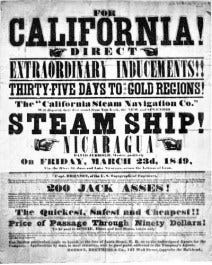
By 1849, the number of those coming for the Gold Rush had grown from 20,000 to over 100,000. These “49ers” (who lent their name to the San Francisco football team) passed through what came to be called the “Golden Gate” of the San Francisco Bay.
The Golden Gate Bridge, which now spans San Francisco to Marin County, gets its name from that gate. Prospectors could make a fortune — nuggets might be found lying on the ground or in streams — if they came early. Some 750,000 pounds or billions of dollars worth of gold was extracted from the mining area, which peaked in 1852.
San Francisco and the Gold Rush
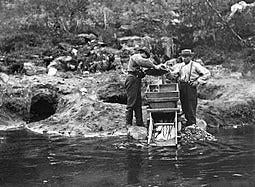
San Francisco went from a small village of 200 to a boomtown of 36,000 toward the end of the rush in 1852. Within 25 years, the city had a population of 150,000. Merchants’ fortunes increased as they supplied goods, transportation, and entertainment to the prospectors heading to the “Mother Lode.”
Initially coming by sea, these Argonauts, referring to the classical story of Jason and the Argonauts seeking the Golden Fleece, would round Cape Horn at the bottom of South America in 5–8 months from the East. Half of the fortune seekers came by sea.
The Isthmus of Panama might shorten that route, but the canal had not yet been constructed, and some of the journey was over land. Otherwise, the trek was across the continent along what was called the California Trail. Following the Civil War, transcontinental railroads were built to connect the East and West coasts.
California and the Gold Rush
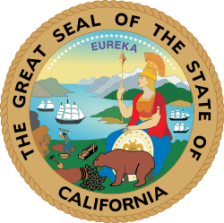
The gold rush essentially created California. The first Federal census in 1860 counted over 300,000 residents; the population had tripled since before the Gold Rush. Lawmaking, government, and civic improvements occurred rapidly. Days after discovering gold at Sutter’s Mill, the Treaty of Guadalupe Hidalgo — which ended the Mexican-American War — left California in the possession of the United States.
A constitution was written in 1849, and California became a free state in 1850 (without slavery.) The University of California at Berkeley — named after Anglo-Irish philosopher George Berkeley — was started as a land-grant university in 1868. Its mascot is the Golden Bear, and its colors are blue and gold. And while it was long known by this name, it was not until 1968 that California was formally designated “The Golden State.”
By the way, the state seal motto of “Eureka” is the Greek word εὕρηκα, “I have found (it)” from the story of the ancient Greek scholar Archimedes. He yelled out this word upon his discovery that the water level in his bath rose to the level represented by the volume of water displaced by his submerged body.
Bill Petro, your friendly neighborhood historian
billpetro.com




